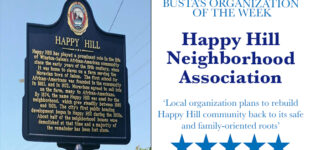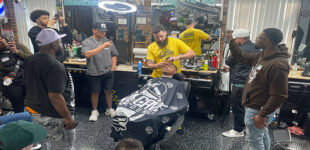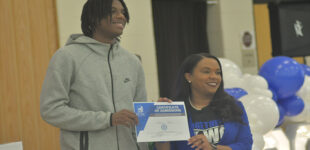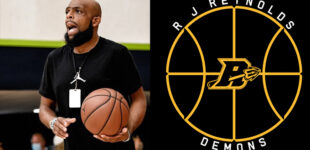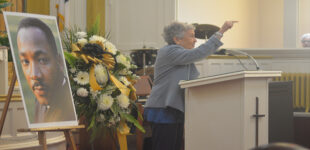Hidden No More tour makes a stop at WSSU
Photo by Tevin Stinson
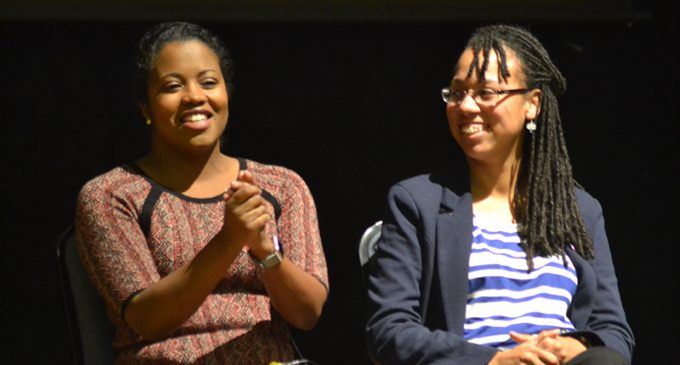
In the 1960s when Katherine Goble Johnson, Mary Jackson, and Dorothy Vaughn played major roles in the early stages of the U.S. Space Program, it was rare to see a woman, let alone three black women, working in a field we know today as STEM (science, technology, engineering, and math).
While Johnson, Jackson and Vaughn would go on to make an impact on NASA more than 50 years ago, as depicted in the book and 2016 biographical film “Hidden Figures,” today women and young girls pursuing careers in STEM is still rare.
According to the U.S. Department of Commerce, although women fill half of all jobs in the United States, they hold less than 25 percent of STEM jobs. STEM careers make 33 percent more than non-STEM careers.
Experts believe one way to get more women interested in STEM is to engage students at an early age and thanks to UNC Chapel Hill’s Morehead Planetarium and Science Center, that’s exactly what happened last Friday on the campus of Winston-Salem State University.
Earlier this year, the center launched the Hidden No More: STEM Women of Color Tour. The tour consists of five speaking engagements around the state in which women who work in STEM fields will have open discussions with girls from middle schools across the state.
During the tour stop at WSSU, Ann Vaughan Hammond and Peggy Vaughan, the daughter and daughter-in-law of Dorothy Vaughan, talked to students for nearly an hour about the importance of education and pursuing jobs in STEM fields. Next, Dr. Jamila Simpson, assistant dean for academic programs, student diversity and engagement for the College of Sciences at N.C. State University, and Dr. Stephani Page, biochemist/biophysicist in the department of pharmacology at UNC Chapel Hill, held a panel discussion on what it’s like to be a leader in their fields.
When asked what inspired them to enter the field of science, Dr. Page said it was her high school chemistry class that made her fall in love with science. She also stressed the importance of having someone who recognized her interest.
“I remember being in my high school chemistry class and just connecting with the subject and having a teacher who saw me connect with the subject. She helped identify that connection for me,” continued Page. “A huge part of me going into science was having people along the way who recognized my skills, who recognized my interest and also, more importantly, encouraged me to be who I am.”
Dr. Simpson, who has a degree in meteorology and worked at the UNC Morehead Planetarium before returning to her alma mater, said she was 7 years old when she fell in love with tornadoes and sciences. She said, “I read every book I could get my hands on about tornadoes, and from there I became even more fascinated. I started watching documentaries on meteorologists and decided that’s what I wanted to become.”
Simpson said although there weren’t many meteorologists in her hometown of Statesville, she was determined to reach her goal, which led to her decision to attend N.C. State.
Following the panel discussion, students were allowed to ask a few questions before winter weather cut the tour at WSSU short.
When discussing the tour and the importance of getting young girls to pursue careers in STEM, Denise Johnson, associate professor and middle grades program coordinator at WSSU, said her department pushed to be a host site for the tour because they already have several programs in place that promote STEM careers.
“We thought this would be a wonderful addition to some of the other programs we have in place.” Johnson said.
Since 2008, WSSU has sponsored GEMS (Girls Empowered by Math and Science), a program that includes STEM- based activities throughout the school year and a weeklong summer camp. Johnson, who serves as director of the program, said there needs to be an outward and inward push to get girls to consider and pursue STEM careers.
“I really hope parents and teachers will work to encourage kids to be more exposed to informal learning experiences. Those kinds of programs really help students see the connection between what they’re learning and how it connects to the real world.”


